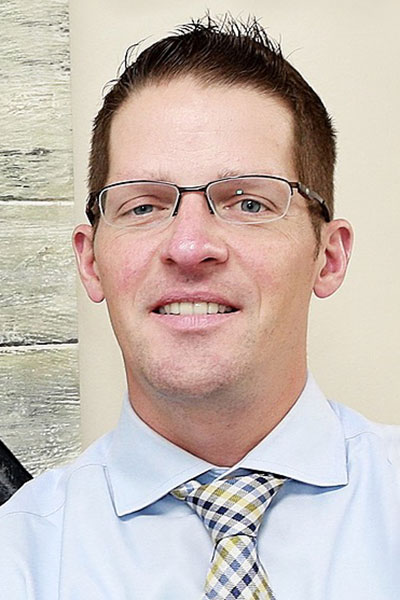The COVID-19 pandemic has accelerated the growth and overall acceptance of telemedicine in rheumatology and cemented its place as an important facet of care.
The ACR Convergence 2020 session Telerheumatology: How COVID-19 Changed It & What’s in the Future examined what rheumatologists can expect going forward. Registered ACR Convergence 2020 attendees have on-demand online video access to watch a replay through Wednesday, March 11, 2021.

Christine Peoples, MD, clinical assistant professor of medicine, Division of Rheumatology and Clinical Immunology, and director of the telerheumatology program, University of Pittsburgh Medical Center, talked about the history, current status, and future of telemedicine in rheumatology. Dr. Peoples, who offers telerheumatology services to three rural Pennsylvania counties, talked about her experiences and lessons applicable to those starting or expanding telehealth services.
“Telerheumatology is extremely important. We knew this before the pandemic,” Dr. Peoples said. “There was a huge demand for access to specialists. Workforce estimates predict a shortage of about 2,500 rheumatologists by the year 2025, and the workforce analysis really highlights that there’s a lack of rheumatology care in rural areas. So the need for telehealth access was greater than ever before the pandemic, and then the pandemic thrust it into the spotlight.”
The successful model for a sustainable and profitable telerheumatology program requires several components. While a physical exam—the “elephant in the room,” Dr. Peoples said—remains the critical core of rheumatology care, there are many things that can be done to increase the clinical relevance of a telerheumatology visit.
When creating, improving, and expanding telerheumatology services, it’s important to understand your faculty, personnel, and location; different payors in your region; and the demographics of your patients and the most likely diagnoses, Dr. Peoples said. It’s also important to understand the financial, IT, and personal investments required and to understand that it’s a dynamic process with regular feedback and continually adjusting workflows.
Questions that need to be answered include where will clinical support come from, where will patients go for diagnostic testing, and is there an infusion center available?
In the coming years, Dr. Peoples said, expect more innovations in terms of equipment available during telerheumatology visits, more involvement and training of rheumatology fellows, and bringing multiple rheumatologists together on a call at the same time—a general rheumatologist and a specialist in a certain area—to work with a patient toward a common goal.
“The true secret to success is the teleconsult staffs for their dedication, enthusiasm, and commitment to the program, and of course, our patients,” she said.

Christopher Phillips, MD, FACR, FACP, chair of the ACR Insurance Subcommittee and member of the ACR COVID-19 Practice and Advocacy Task Force, discussed the changes in regulations that allowed for the expanded utilization of telehealth during the COVID-19 public health emergency.
The pandemic will end, Dr. Phillips said, but the growing role of telehealth in rheumatology will remain. And patients will continue to have expectations for telehealth services.
Regulators made many pandemic-specific changes to the rules to facilitate telehealth visits. Health and Human Services waivers removed restrictions for site of care and HIPAA-compliant platforms. Many states also relaxed cross-border licensure requirements. And for the duration of the pandemic-related public health emergency, CMS provides for audio-payment parity. Most commercial payers followed suit, which proved valuable to many of the estimated 14 million Americans without internet and the millions more—possibly up to 160 million Americans—who lack access to broadband service.
The ACR has put together several resources that give providers and patients information about the key issues surrounding telehealth. The ACR Telehealth Provider Fact Sheet includes coding guidelines and information to help understand important concepts and regulations to ensure proper reimbursement for telehealth services. The ACR also has created resources about state licensure, a list of commercial payer temporary telehealth policies, and guidance for patients about how to navigate telehealth during the pandemic.
Starting to plan now for telehealth in the post-pandemic world makes good business sense, Dr. Phillips said. He said that of the COVID-19-related regulations that were relaxed, the changes to the patient site and rural designations for care are likely to remain, but the revisions to audio-only encounters and cross-border licensure requirements will probably be rolled back. Less clear is what will happen regarding HIPAA compliant platforms.
The ACR’s position statement on telehealth includes support for:
- The ongoing role of telemedicine in rheumatology
- Audio-only and audio-visual payment parity
- Protocols to protect security of patient data while balancing need for patient access
- Proposals that facilitate cross-state practice of telemedicine
- Outcomes-based research in telerheumatology
The position statement also includes opposition to geographical restrictions on patient sites and payer policies mandating certain platforms or diverting patients to the provider’s “preferred” telemedicine partners.
